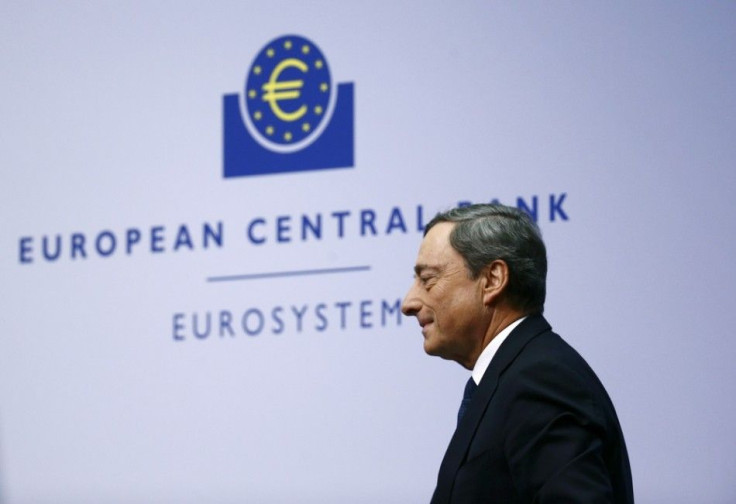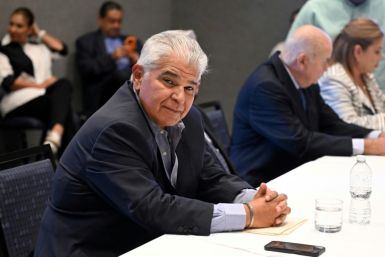Global Markets Overview – December 5, 2014

Stimulus to remain the market driver of 2015
2015 will remain a year of mass monetary accommodation; what will change is where the money printing and record low rates will come from.
The ECB is clearly gearing up for a broad-ranging stimulus package in 2015. ECB President Mario Draghi stated clearly that the Board 'won't tolerate' low inflation and announced that officials had discussed all measures barring gold to support the economy at last night's meeting. It will allot another round to its current corporate bond buying program onDecember 11, as it looks to expand the balance sheet to €1 trillion.
All of this isn't new and the statement only alluded to a sovereign bond buying program 'early in the new year'. European markets clearly had over-priced the prospect of a January's program and were promptly punished for the Board's under-deliverance.
This will be one risk to investing next year as the market continues to leverage itself to central bank announcements, with the EUR and JPY are no doubt heading lower against the USD on the fundamental differences between the central banks. However, whether the banks can deliver on the lofty expectations at individual meeting remains to be seen. Therefore 2015 will likely see increased volatility - something that was lacking this year to a point of becoming complacent.
The other interesting part of the global stimulus, whether it comes from the ECB the Bank of Japan or the PBoC, is how this will feed into equity markets. The central banks are using the domestic markets as a mechanism to create wealth and growth. Asset appreciation has several positive effects on the end goal of lifting inflation. Wealth creates spending, it creates lending, increases payouts (wages and profits) and it promotes confidence at the corporate and personal level.
It is not hard to see European and Japanese markets outperforming the global index next year, as the stimulus from their respective central banks leads to fund flows into these asset classes; these are market we will be watching closely in 2015.
The PBoC is the interesting one for next year; communication from the bank tends to be rather quiet, but it will intervene where necessary. The market will likely see these interventions as 'surprises' considering the nature of how the bank operates, which will create spikes.
What is clear is that growth will be a key part of its mantra next year. It has signalled its intent to support growth by leaving excess liquidity in the market, lowering interest rates to stave off the effect of disinflation; we are likely to see further measures around refinancing and the ability to access credit - particularly lending outside of property.
With the US now marching towards increases in the Fed funds rate, interest rate differentials will also benefit the equities trade once more.
Early this year QE was used to get exposure to high-yield investments and 2015 is gearing up to be another year for the yield hunter. The ECB, BoJ and the PBoC are not going to be the only central banks looking at all options to support growth through accommodation.
Will the RBA also follow suit and drop interest rates even further? Economists are falling over one another to downgrade growth forecast and rates to boot. A 2% cash rate would see simple money market products at or just above inflation levels, making yield stocks (at almost any price) highly attractive.
Ahead of the Australian open
Based on the moves in the futures markets overnight, we are calling the ASX up eight points to 5376; iron ore bounced strongly yesterday, however oil slid further into a bear market as Saudi Arabia cut its prices to the US and Asia. It is likely to be a rocky end to a rocky week.
Have a Merry Christmas and a happy New Year I have really enjoyed discussing markets with you this year, I look forward to doing all over again in 2015.
Asian markets opening call | Price at 8:00am AEDT | Change from the Offical market close | Percentage Change |
Australia 200 cash (ASX 200) | 5,376.80 | 8 | 0.15% |
Japan 225 (Nikkei) | 17,857.50 | -30 | -0.16% |
Hong Kong HS 50 cash (Hang Seng) | 23,808.40 | -24 | -0.10% |
China H-shares cash | 11,551.20 | 70 | 0.61% |
Singapore Blue Chip cash (MSCI Singapore) | 370.61 | -1 | -0.19% |
US and Europe Market Calls | Price at 8:00am AEDT | Change Since Australian Market Close | Percentage Change |
WALL STREET (cash) (Dow) | 17,878.50 | -38 | -0.21% |
US 500 (cash) (S&P) | 2,069.88 | -4 | -0.21% |
UK FTSE (cash) | 6,697.50 | -33 | -0.51% |
German DAX (cash) | 9,909.50 | -87 | -0.87% |
Futures Markets | Price at 8:00am AEDT | Change Since Australian Market Close | Percentage Change |
Dow Jones Futures (December) | 17,867.50 | -40.00 | -0.22% |
S&P Futures (December) | 2,069.13 | -4.25 | -0.20% |
ASX SPI Futures (December) | 5,374.50 | -1.00 | -0.02% |
NKY 225 Futures (December) | 17,872.50 | -12.50 | -0.07% |
Key inputs for the upcoming Australian trading session (Change are from 16:00 AEDT) | Price at 8:00am AEDT | Change Since Australian Market Close | Percentage Change |
AUD/USD | $0.8386 | -0.0010 | -0.12% |
USD/JPY | ¥119.715 | -0.205 | -0.17% |
Rio Tinto Plc (London) | £29.25 | -0.86 | -2.86% |
BHP Billiton Plc (London) | £14.95 | -0.24 | -1.55% |
BHP Billiton Ltd. ADR (US) (AUD) | $30.52 | -0.37 | -1.21% |
Gold (spot) | $1,208.05 | 1.67 | 0.14% |
Brent Crude (January) | $69.54 | -0.94 | -1.33% |
Aluminium (London) | 1996.25 | 23.25 | 1.18% |
Copper (London) | 6470.5 | 93.00 | 1.46% |
Nickel (London) | 17115 | 525.00 | 3.16% |
Zinc (London) | 2235 | 21.00 | 0.95% |
Iron Ore (62%Fe Qingdao) | $71.25 | 2.00 | 2.89% |
[Kick off your trading day with our newsletter]
More from IBT Markets:
Follow us on Facebook
Follow us on Twitter
Subscribe to get this delivered to your inbox daily






